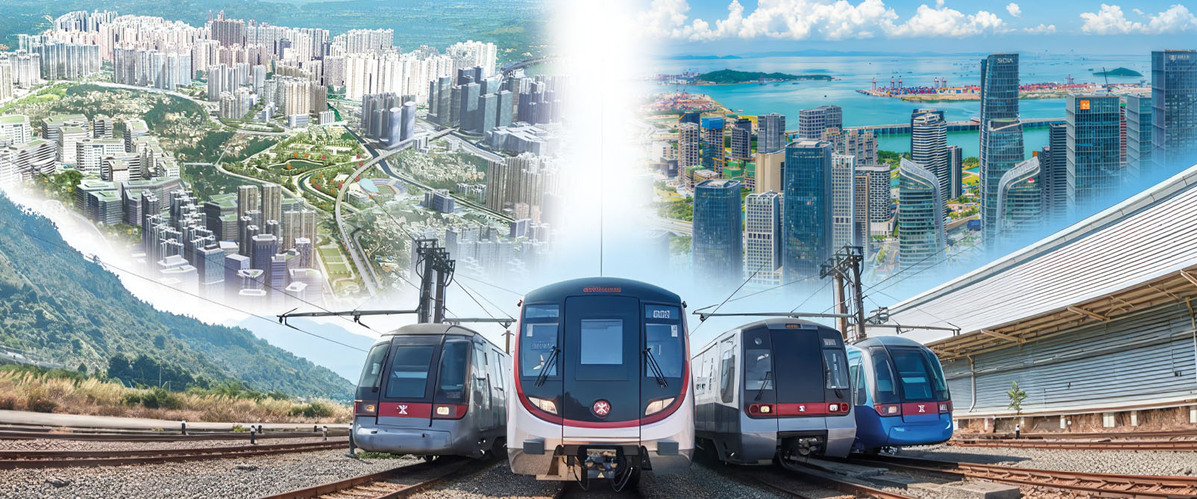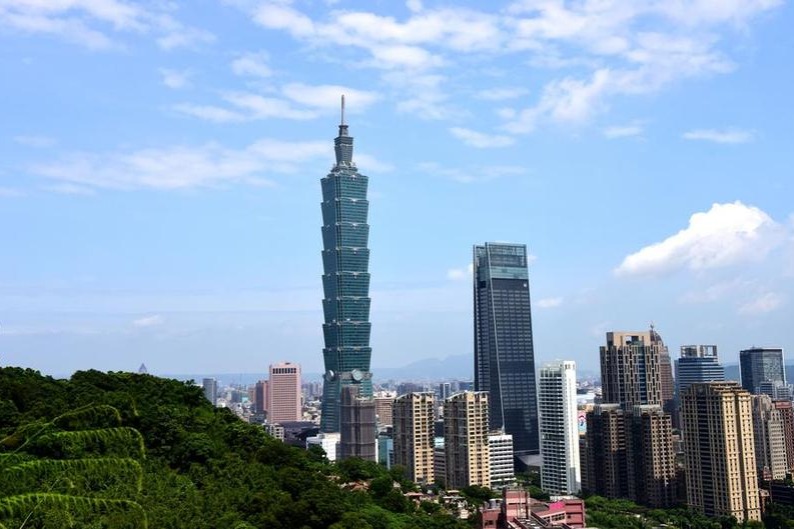Integration shatters innovation barriers
HK's latest policy blueprint outlines strategies for closer cooperation with neighboring Shenzhen in infrastructure, financial technology, and various other industries, which is expected to boost both cities' global economic roles. Li Bingcun reports.


Hong Kong's latest Policy Address paves the way for the dismantling of innovation barriers between the special administrative region and Shenzhen, leveraging their complementary strengths to enhance their positions in the global value chain, experts say.
From accelerating cross-boundary infrastructure construction and developing financial technology to fostering industrial collaboration, they believe greater cooperation will enable strategic integration to create a synergistic innovation ecosystem.
Chief Executive John Lee Ka-chiu's fourth policy blueprint of his current tenure aims to vigorously develop the Northern Metropolis and drive the construction of the Hong Kong-Shenzhen Western Rail Link (Hung Shui Kiu-Qianhai). These efforts are expected to create immense opportunities for Shenzhen, enabling the boomtown of Guangdong to play a pivotal role in the HKSAR's development.
Infrastructure vision
Multiple development frameworks will be deployed along the boundary, transforming the "point-to-point "model, which has relied on a handful of land crossings, into a broader and deeper integrative approach. Such a shift will facilitate policy innovation, talent exchange, industrial growth and the implementation of research projects.
Fan Kwok-yuen, an assistant professor at the Hang Seng University of Hong Kong, believes the Hong Kong-Shenzhen Western Rail Link could expand cross-boundary collaboration beyond the eastern crossings in Shenzhen's Luohu and Futian districts, to the western region of the border area.
The new rail link — connecting Hung Shui Kiu in the western New Territories and Qianhai in Shenzhen — is expected to enter service in 2035, cutting the travel time between the two places to 15 minutes. It will connect the new development hubs on both sides, allowing businesses to flexibly organize their value chains across these locations. The connectivity will see new industrial clusters emerging along the route, benefiting industries that rely heavily on talent density and information exchange, says Fan.
The scholar believes Shenzhen can play the dual roles of "co-planner "and "strategic investor" in the Northern Metropolis' development as its State-owned enterprises possess extensive experience and substantial capital in urban development, infrastructure financing and industrial park operations.
In his view, they can participate in the construction and long-term operation of specific parks, such as the San Tin Technopole, through equity investments and joint ventures.
He encourages Shenzhen's leading technology enterprises to set up international headquarters, cutting-edge research and development units, and intellectual property management centers in the area to fully leverage Hong Kong's advantages. Both cities can also team up with international educational powerhouses in the planned university town to cultivate interdisciplinary talent.
Yu Lingqu, deputy director of the department of finance industries at the China Development Institute, highlights Shenzhen's experience in integrating technology with industry, particularly in developing industrial parks, driving tech breakthroughs, developing financial technology and supporting the financing of enterprises. These insights are valuable references for Hong Kong in building the Northern Metropolis and developing its tech industry.
Innovation financing
Finance and trade also featured prominently in this year's Policy Address. The initiative to enhance cross-boundary credit referencing and the Shenzhen-Hong Kong cross-boundary data validation platform is aimed at helping Hong Kong banks to assess the credit worthiness of Chinese mainland residents and enterprises in the SAR.
Fan believes this would help mainland residents and businesses with good credit records to secure loans in Hong Kong, thus boosting the real economy. It will also lighten the financing difficulties of mainland companies establishing branches or conducting business in Hong Kong, and allow them to leverage Hong Kong's international financial platform to go global. Likewise, Hong Kong enterprises entering the mainland part of the Greater Bay Area market will benefit from improved credit assessments.
Hong Kong's bid to collaborate with other exchanges in the Greater Bay Area in developing commodity and carbon trading is geared to building a regionally influential pricing center, says Fan. This will bolster the nation's influence in pricing key commodities and environmental goods.
He hopes Shenzhen and Hong Kong can jointly develop green finance standards and certification systems in line with international benchmarks, attracting global green capital and supporting the nation's dual carbon goals.
At the same time, Hong Kong's plan to build a "Technology Enterprises Channel" to help mainland technology enterprises raise funds will provide a more efficient "fast track" to international financing for Shenzhen's tech enterprises.
In the long run, Fan envisions creating a cross-boundary investment and financing service chain covering the entire lifecycle of tech firms. For instance, the stock exchanges of both cities could launch a "Greater Bay Area technology innovation board "that is open to global investors and can implement more flexible listing rules, he says, providing efficient equity financing channels for hardtech companies at various stages of development.
Yu believes deepening financial cooperation between Shenzhen and Hong Kong will advance significant national drives such as the internationalization of the renminbi and the opening-up of mainland capital markets.
Yu notes that only New York and London currently qualify as global financial centers with dominant influence over international finance. However, with China's economic rise and the Belt and Road Initiative, a Shenzhen-Hong Kong financial center could potentially outpace them in technology financing, commodity pricing, and digital finance innovation, emerging as the "third pole" in global finance.
Direct to the future
In industrial development, the Policy Address emphasizes the importance of emerging sectors like artificial intelligence, the low-altitude economy and the space economy, offering new avenues for Shenzhen-Hong Kong cooperation. In these areas, Fan suggests that Hong Kong can leverage its top universities, global talent and financial resources to drive original innovations and funding. Meanwhile, Shenzhen can rapidly scale up these innovations through its strong industrial base and vast market. Hong Kong can further establish international standards for new industries, with Shenzhen offering the necessary environments for testing and optimization.
Yu says that the different legal systems in the two cities would mean different rules being applied to commercial dispute resolution, intellectual property protection, and data security, increasing costs for companies in qualifications, compliance and market expansion.
He recommends adopting a mechanism similar to the "co-location arrangement", used at Shenzhen Bay checkpoint that features collaborative inspection and joint customs clearance between Shenzhen and Hong Kong, for mutual recognition through a single certification.
For example, such an approach could be adopted in the application of research equipment within the Hetao Shenzhen-Hong Kong Science and Technology Innovation Cooperation Zone. If laboratory equipment from Hong Kong universities, such as mass spectrometers and gene sequencers, is certified by Hong Kong's Innovation and Technology Commission, it could be directly utilized for research projects on the mainland.
Shi Kun, director of the Department of Regional Development and Planning at the China Development Institute, says that cooperation between Shenzhen and Hong Kong has now extended across the entire value chain, involving a diverse range of participants beyond just enterprises.
He believes that future industrial cooperation will focus on strategic emerging industries centered on advanced manufacturing and knowledge-intensive modern services, with Qianhai and Hetao as the primary platforms.
As Qianhai and Hetao are separately linked with the western regions and central of the Northern Metropolis, he hopes that more pilot projects could be launched in the boundary region.
Furthermore, Shi says the new chapter in cross-boundary collaboration highlights the roles of Shenzhen and Hong Kong in supporting key mainland enterprises to expand globally.
Contact the writer at bingcun@chinadailyhk.com
- Integration shatters innovation barriers
- Jakarta-Bandung High-Speed Railway handles over 12m passengers in 2 years
- A channel for breakthroughs
- Scientists propose new model to sustain global carbon cycle simulation
- Chinese scientists warn of extreme drought impact on global grassland, shrubland ecosystems
- China renews alerts for rainstorms, strong winds




































